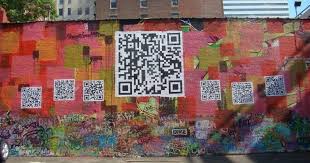
QR codes are no longer just for menus or payments—they’re becoming part of the street art movement. In cities across the world, including India, artists are embedding QR codes into murals and graffiti to make their work interactive and digital.
When scanned with a smartphone, these QR codes can lead viewers to a hidden poem, a short video, a music track, or even an artist’s portfolio. This fusion of physical and digital creates a new layer of engagement. The wall doesn’t just show—you can experience what lies behind it.
Some artists use QR codes to tell deeper stories. A mural of a farmer might link to a documentary on agriculture. A painted eye could open a personal audio message. Others turn it playful—scavenger hunts, animated extensions, or secret exhibitions unlocked only via the code.
This tech-enabled art form also helps lesser-known artists gain visibility. QR codes bypass traditional galleries, connecting creators directly to audiences. It’s street art that speaks in hyperlinks.
In a world where digital presence matters, QR art bridges offline and online. It makes public walls not just visible, but clickable. As more artists experiment with tech, QR codes are becoming part of the new street art toolkit.